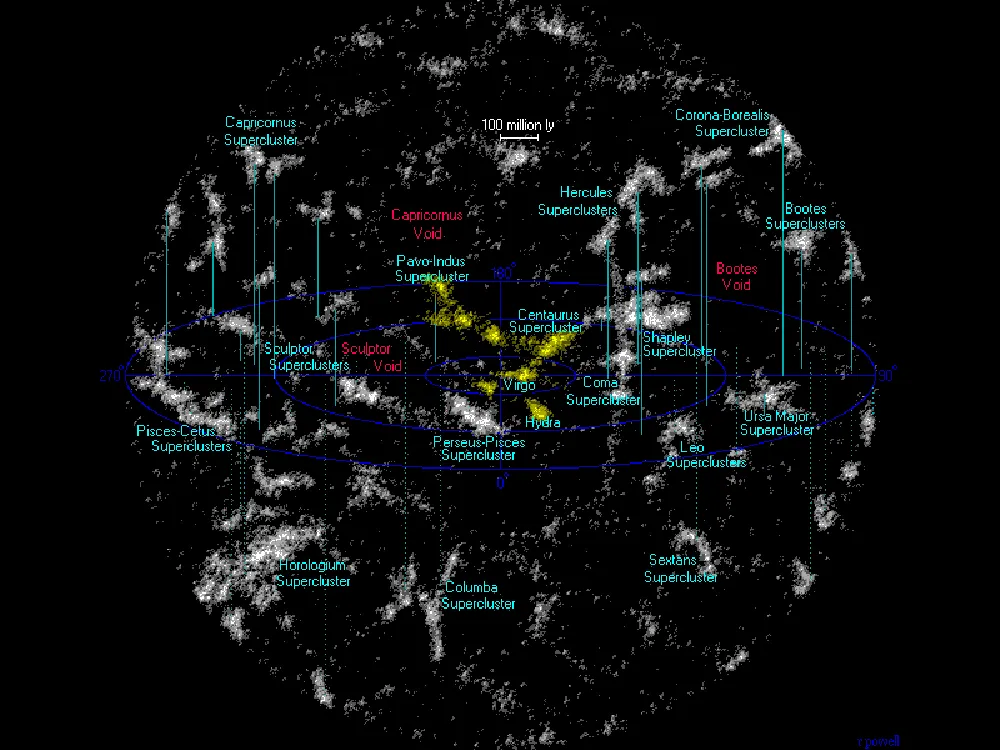The Virgo Supercluster is our home, thought you may not hear about it as much as our Solar System or our galaxy the Milky way.
To understand what the Virgo Supercluster is and where it sits in our cosmic address, we have to travel back to the early Universe.
A bit of cosmic history

Once upon a time, all matter in the entire Universe was tightly packed in one infinitely small, infinitely dense singularity.
Then the Big Bang happened, and all of a sudden there matter was, spilling about all over the place.
Fast forward 13.8 billion years or so, and that matter is spread across a Universe so large that it hurts most people’s brains to think about it for too long.
Crucially, though, matter is not distributed evenly.

From stars to superclusters
Thanks to gravity, matter clumps together to form stars and planets, which in turn clump together to form galaxies.
And the clumping doesn’t end there.
Galaxies themselves clump together to form galaxy groups or clusters, which clump together to form superclusters, some of the biggest objects in the Universe.
There could be around 10 million superclusters, accounting between them for pretty much all the matter in the observable Universe.
The existence of superclusters was first posited by French astronomer Gérard Henri de Vaucouleurs in the 1950s.
The idea was confirmed by large-scale space surveys conducted in the late 70s/early 80s.
By 1982 Canadian-American astronomer R Brent Tully was able to describe the Virgo Supercluster’s basic size and shape.

The Virgo Supercluster, our cosmic abode
The supercluster that Earth calls home is the Virgo Supercluster, which has a diameter of 110 million lightyears.
Within it are found around 100 galaxy groups and clusters, the largest of which are the Virgo Cluster and Local Group.
The Local Group is so named because it’s where you’ll find both our own Milky Way.
And our nearest galactic neighbour, the Andromeda Galaxy (and at least 80 other smaller galaxies).
The Virgo Supercluster is about 7,000 times the size of the Local Group, and 100 billion times that of the Milky Way.
However, scientists now believe that the Virgo Supercluster is itself part of even larger structure dubbed Laniakea.
Laniakea includes the Virgo, Hydra-Centaurus and Pavo-Indus superclusters.
And so it goes on…

